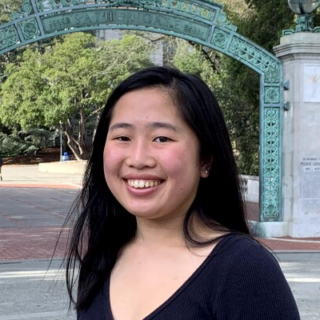Protected: Passing Down Indigenous Knowledge
Land Acknowledgement
The Phoebe A. Hearst Museum of Anthropology recognizes that the University of California, Berkeley occupies the ancestral and unceded land of the Muwekma Ohlone Tribe, the successor of the historic and sovereign Verona brand of Alameda County. This land was and continues to be of great importance to the Muwekma Ohlone Tribe and other familial descendants of the Verona Band. Since the institution’s founding in 1868, every member of the UC Berkeley community has benefited from the use and occupation of this land.
As members of the UC Berkeley Undergraduate community, it is vitally important that we not only recognize the history of the land on which we stand, but also, we recognize that the Muwekma Ohlone people are alive and flourishing members of the Berkeley and broader Bay Area communities today. We have a responsibility to acknowledge and make visible UC Berkeley’s relationship to Native peoples.
To all visitors and guests of the Phoebe A. Hearst Museum and this web page, we encourage guests to recognize the indigenous land they are on by referencing https://native-land.ca/.
This acknowledgement was adapted from the Centers for Educational Justice & Community Engagement and the 2019 report on Native American collections at the University of California, Berkeley. Interested in learning more? Please visit the official website of the Muwekma Ohlone Tribe.
Indigenous Food Sovereignty
Food sovereignty as a concept is often defined as the “right of peoples to healthy and culturally appropriate food produced through ecologically sound and sustainable methods and their right to define their own food and agriculture systems”.
In regards to Indigenous food sovereignty for American native groups, this definition expands to encompass cultural, ecological, and spiritual relationships with elements of those food systems.
Especially in Northern California, settler colonialism and US policy laws have prevented access to native foods due to criminalizing early day practices and forced assimilation. While there has been a lot of modern movements towards achieving food sovereignty, there is still a lot of work that needs to be done.
Exhibition at a Glance
“If we can understand that ‘growing crops and rearing animals’ could include the pruning of oak trees to benefit acorn production, the burning of meadowlands to produce grassy pastures that support animal populations, and the selective harvesting of plants to encourage plant production, then we can conclude that California was indeed one big farm.”
-Gerald Clarke, “Bringing the Past to the Present: Traditional Indigenous Farming in Southern California” (2019)
Each Indigenous community possesses a wealth of Indigenous knowledge to pass between generations, from the gathering of native plants to the preparation of traditional dishes. Yet historically, anthropologists presented these indigenous knowledge bases as lost, fostering decades of salvage anthropology. For over a century, the United States education system has reiterated that Indigenous cultures and their food practices have disappeared, passing down a collection of misconceptions and stereotypes.
Passing Down Indigenous Knowledge presents an alternative for educators discussing Indigenous cultures with younger children, one that celebrates Indigenous peoples’ culture, specifically in connection to sustainable food practices. Through this exhibition, it is our hope that educators, of both Indigenous or non-Indigenous backgrounds, can garner a foundational understanding of how to present topics of Indigenous food sovereignty to children between the ages of five and eight, allowing both Indigenous children to see themselves accurately represented and non-Indigenous children to better understand Indigenous experiences.
Throughout our exhibition we address two audiences: the educator and the child. In our first two exhibits, parents, teachers, and curators of elementary aged children will learn about Indigenous food sovereignty and how to integrate the topic in early learning. While our third exhibit allows children to explore Indigenous food traditions local to Northern California.
Understanding The Importance of Indigenous Foods
What is Indigenous food sovereignty? Why does Indigenous food sovereignty matter? Looking at historical background, research reports, and personal anecdotes, we set a solid foundation on understanding the importance of native foods.

Decolonizing Early Learning: Teaching Young Children About Indigenous Cultures & Food Sovereignty
How can educators combine interactive learning with the teaching of Indigenous cultures? What resources are most useful at home, in the classroom, or even in a museum? Explore our selection of Indigenous children’s literature, classroom crafts, local Bay Area opportunities, and national exhibits that celebrate Indigenous food sovereignty, as we propose how educators can best incorporate interactive learning in their teaching.

Exploring California Indigenous Food & Practices Through Traditional Acorn Mush
Acorn mush is a California Native American dish traditionally made by mixing leached acorn flour and water together. Through this interactive activity, explore the different tools used to create acorn mush, and the process for which the dish is created.

Meet The Curators

Ashley is a third year Electrical Engineering & Computer Science major and Art History minor at UC Berkeley. This upcoming summer, Ashley will be working at Disney animation as a software developer. As an avid video game enthusiast in her younger years, Ashley wanted to focus on engaging some form of interactive technology component for youth to engage with in this exhibit.

Neha is a fourth year Art History Major at UC Berkeley with a focus on decolonization and repatriation in the Asian hemisphere. After graduation, Neha hopes to pursue a JD with a focus in art property and acquisition. Because of her interest in the intersection of art, public health, and law, Neha’s main interest in the exhibit was on the historical policies that shaped current social climates.

Amanda is a fourth year English major and Medieval Studies minor at UC Berkeley. After graduating in Spring 2022, she hopes to pursue a PhD in English with a focus on the Middle Ages. In the Summer of 2021, Amanda had the privilege of working at the Bay Area Discovery Museum. Since working at BADM, Amanda has taken a keen interest in making museum spaces accessible to young children.
